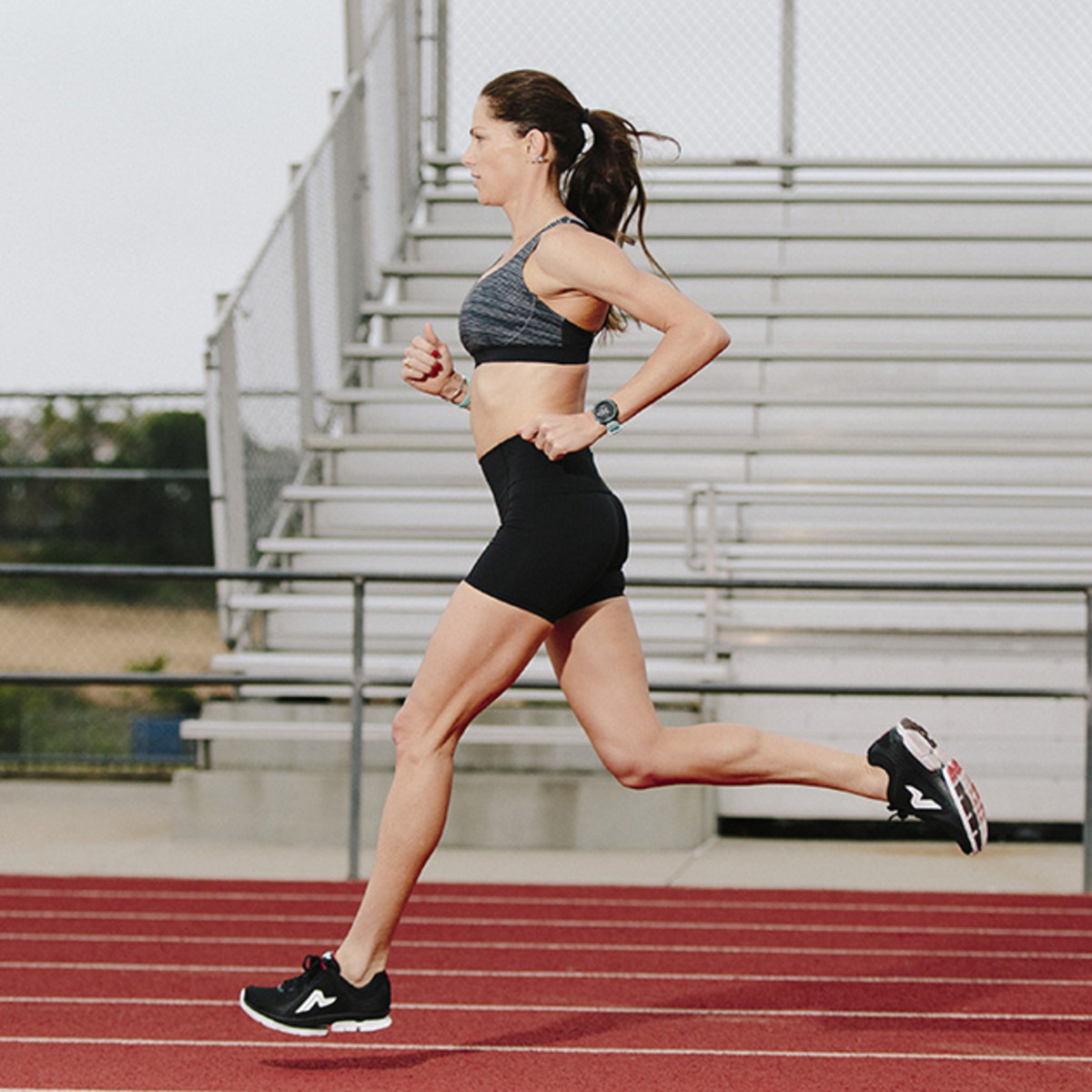AMPLA Fly: New shoe puts a spring in your step

This story first appeared in the June 13, 2016, issue of Sports Illustrated. Subscribe to the magazine here.
Inspired by the carbon fiber blades used by amputee sprinters, manufacturers have designed a new running shoe, and though it does provide some spring to an athlete’s step, its main purpose is to improve a runner’s form.
The brainchild of Marcus Elliott, who is the force behind P3, a sports performance lab in Santa Barbara, the sole of each AMPLA Fly is made from a single piece of carbon fiber. A tongue of the fiber juts out from the toe toward the midsole, acting as a spring that absorbs, stores and then releases part of a runner’s impact force on each foot strike.
How Lululemon's high-tech lab designs Olympic uniforms for Rio
“The easily identified commonality of our best athletes across all sports is their ability to use force to their advantage,” Elliott says. A Harvard-trained MD, Elliott spends much of his time analyzing the movement of pro athletes with force plates and motion-tracking cameras. Over 100 NBA stars have trained at P3, and Elliott’s team has run a pop-up laboratory at the last two NBA Combines. But “the model when building running shoes has been that force is your enemy,” he says, “[AMPLA Fly] is the opposite model.” Elliott wants to redirect the force, not squish it into a wedge of foam.
“It’s intended to teach everyone how to run like elite athletes,” says David Bond, Ampla’s cofounder and a former executive at Nike and Adidas. According to Bond, the carbon fiber spring is not strong enough to increase a runner’s speed, but the spring heightens the feeling of the midsole striking the ground, training the runner to shorten his or her stride and to land on the middle of the foot rather than the heel. It changes a runner’s biomechanics, which can improve performance and reduce injuries. Any speed gain from wearing the $120 shoes—carbon fiber isn’t cheap—is due to better use of the elasticity of the runner’s own body.
According to a University of Wisconsin study published in the February 2011 edition of Medicine & Science inSports & Exercise, increasing cadence and decreasing stride length can significantly reduce the loading in the hip and knee joints.

In 2013, Bond and Elliott turned to former distance runner and ex-Nike executive Mark Sheehan for help with early testing and production. “The first one broke because we didn’t have the carbon fiber tension correct,” Sheehan says. No one else on the project matched Sheehan’s size nine feet, so for months he was the only person in the world running in the shoes. On training runs he would avoid popular trails in Southern California just to try to keep the technology under wraps.
Early on, AMPLA was a startup brand within the Quiksilver family, but the project stalled when the parent company filed for bankruptcy last September. Elliott, Bond, and two former Quiksilver execs, Rob Colby and Charles Exon, bought the rights to the experimental brand in December and re-launched the idea. The shoes are now being sold online, with free shipping and free returns in order to overcome any reluctance about the unconventional design.
Tech Talk: G-Form protective padding garments respond to collisions
Tom Hartge, Nike’s former global brand director and an AMPLA advisor, ran his 30th Boston marathon last year wearing AMPLA Fly, but both he and Sheehan consider it more as a training tool that helps them correct their running gait even when they are wearing different shoes. Through college and a pro career, Sheehan was always a heel striker, but he says that AMPLA Fly has helped teach him a more efficient motion.
Bond and Elliott don’t want to stop at encouraging better form and improving efficiency, though, but instead hope to eventually push the limits of shoes as far as they can. IAAF rule 143 restricts that shoes must be for protection, stability, and grip, and cannot provide unfair assistance. The relatively weak strength of the carbon fiber spring in AMPLA Fly “is not illegal, but it can be,” Bond says. “We’d like to create a shoe that does provide a mechanical advantage … and have somebody run a sub-two-hour marathon.”
